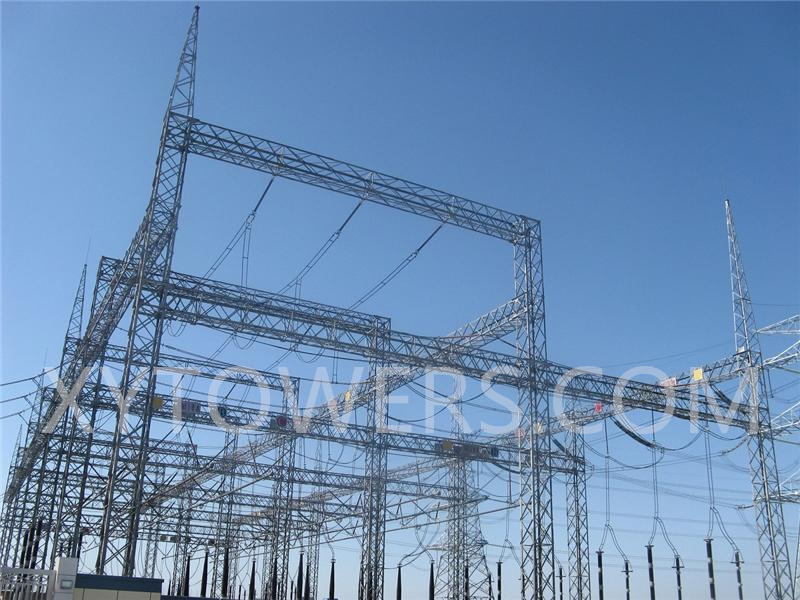
Substation structures are essential components of electrical power systems, providing support and housing for various equipment and facilities within a substation. These structures play a crucial role in ensuring the reliable and efficient operation of transmission and distribution networks. In this comprehensive overview, we will delve into the types, features, and functions of substation structures, highlighting their significance in the power infrastructure.
Substation structures encompass a diverse range of configurations, including steel gantries, lattice towers, and equipment support systems. Steel gantries are commonly used to support overhead transmission lines and facilitate the installation of electrical equipment. Lattice towers, on the other hand, are employed for the suspension of conductors and insulators in high-voltage transmission substations. Equipment support systems encompass a variety of structures designed to accommodate transformers, switchgear, and other essential components within a substation.
Substation steel structures are engineered to withstand the demanding environmental conditions and mechanical loads encountered in power distribution and transmission applications. These structures are fabricated from high-quality steel, offering exceptional strength, corrosion resistance, and longevity. Additionally, substation steel structure gantries and towers are designed with modular components, enabling efficient assembly and customization to suit specific project requirements. The structures are also engineered to comply with industry standards and safety regulations, ensuring reliable performance and operational integrity.
The primary function of substation structures is to provide a secure and stable framework for supporting critical electrical infrastructure. Steel gantries facilitate the efficient routing and suspension of overhead transmission lines, contributing to the reliable transmission of electrical power over long distances. Lattice towers play a pivotal role in maintaining the proper clearance and insulation of high-voltage conductors, ensuring the safe and efficient operation of transmission substations. Equipment support systems offer the necessary foundation and mounting provisions for transformers, circuit breakers, and other essential substation equipment, enabling the seamless integration and operation of power distribution facilities.
Substation structures are integral to the development and modernization of electrical substations and transmission networks. Their robust construction and versatile functionality contribute to the safe and reliable operation of power systems, supporting the seamless transmission and distribution of electricity to end-users. As the demand for efficient and sustainable energy infrastructure continues to grow, substation steel structures play a pivotal role in enhancing grid resilience, optimizing land use, and minimizing environmental impact.
In conclusion, substation structures, including steel gantries, lattice towers, and equipment support systems, are indispensable components of electrical power systems. Their diverse types, robust features, and critical functionality underscore their significance in supporting the reliable and efficient operation of transmission and distribution substations. As the power industry continues to evolve, substation structures remain essential elements in advancing the resilience and performance of electrical infrastructure.
Post time: Jul-05-2024





